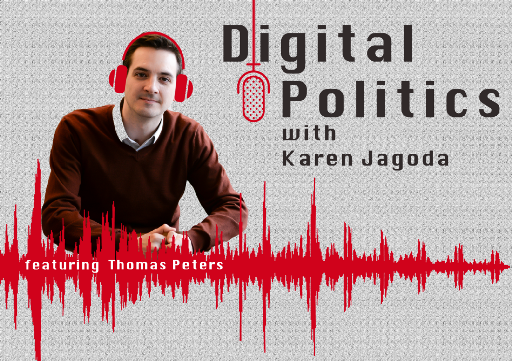Our founder and CEO Thomas Peters sat down with Karen Jagoda to give an inside look into how peer-to-peer (P2P) texting works, and why it is such an effective tool. This episode of the Digital Politics podcast dives into best practices, use cases, and the power of P2P in the political space.
Fresh off an awards sweep at the AAPC, RumbleUp is leading the charge and spreading the word about how P2P texting is a proven, effective way to raise money, recruit volunteers, educate voters, boost event attendance, and so many other use cases.
It has been a process to convince seasoned political consultants that P2P is a viable tool. “These are political consultants who have been doing TV, direct mail, and landline phones for decades when peer-to-peer texting has only been around since 2015” says Thomas, “Peer-to-peer had to grow up very quickly.”
It hasn’t been an easy road for peer-to-peer texting to navigate, because texting is a regulated industry. “It is in a thorny environment, if you don’t do it the right way, you can face a lawsuit.”
RumbleUp is focused on legal compliance and upholds transparency as a top priority. Texting campaigns are monitored and adjusted if too many messages are marked as spam, recipients are always given the choice to opt-out, and we work with clients to ensure that every text sent is in line with the expectations of the cell phone carriers.
As Peters goes on to explain, “Peer-to-peer vendors have to be held to a high standard. We carry a lot of risk with our clients and it’s our responsibility to make sure our clients are as protected as possible…we put in a tremendous amount of work to make sure the system is designed to be compliant with regulations. If you take short cuts [with another vendor], you can get in trouble.”
While RumbleUp always gives recipients the choice to opt out, the goal is to text an audience who wants to be reached out to. 95% of texts are opened and read, but choosing the right audience will take people from passive readers to active donors and supporters. As Peters says, “If we discover that most of your supporters tend to be middle-aged suburban women, then we can go to a data file and find similarly aged suburban women to text.”
RumbleUp helps clients find the best audience using the best data. Voting records, consumer habits, family size — the specific indicators available help enable effective targeting. Your campaign will not lead to good outcomes if it is directed to a disinterested contact list. So if it is fundraising, look for previous donors. If you want to fill a rally, look for the people who have never missed an election. Through data analysis, we can also identify commonalities among a client’s supporters and create a look-alike audience to expand their reach.
The best data means your texts get to the best people. People who donate, advocate, and show up.
The reach of peer-to-peer texting continues to grow. “Right now there’s about 60 to 65 percent coverage for cell phone numbers of registered voters in America,” and as Karen points out, that number is only going to rise.
Peer-to-peer texting is a powerful tool when paired with the right vendor, and in just a few years it has gone from an option in political campaigns and organizations, to a necessity.
Listen to the interview in its entirety or click below!
Digital Politics with Karen Jagoda: Peer To Peer Texting Best Practices with Thomas Peters RumbleUpThomas Peters, Founder and CEO, RumbleUp and uCampaign provides an update on the use of peer-to-peer texting by…digitalpoliticsradio.com
Special thanks to Joseph Barnes for his contributions writing this article.
Related News:
Find out more about RumbleUp:
- Phone calls are passé. This D.C. startup is raising millions to grow your business with texting- The Business Journals.
- GOP Consultant & RI Native Sullivan Talks Authenticity in Peer-to-Peer Texting with RumbleUp - GoLocalProv
Subscribe to our newsletter to keep up with the latest news in P2P texting.
